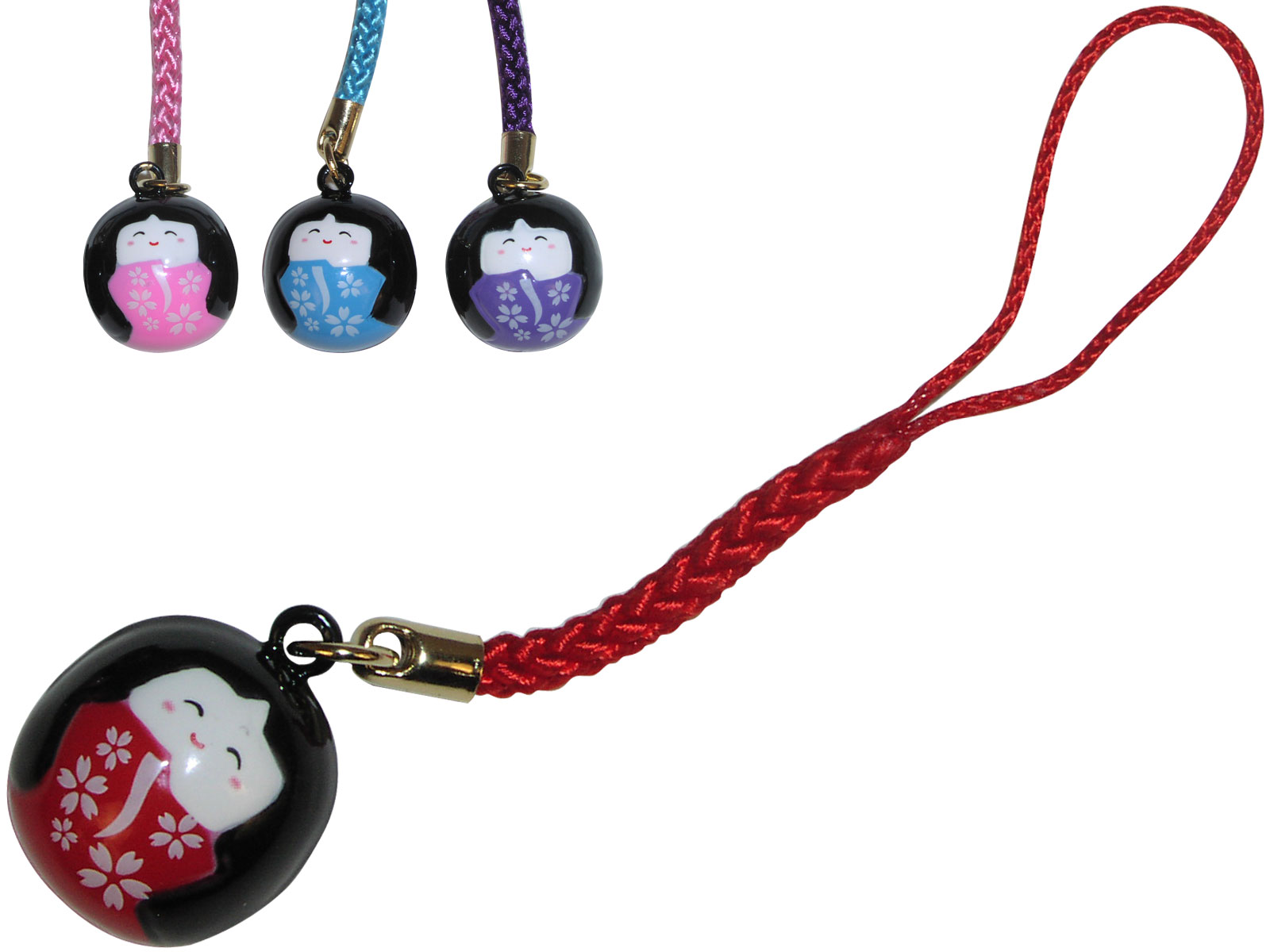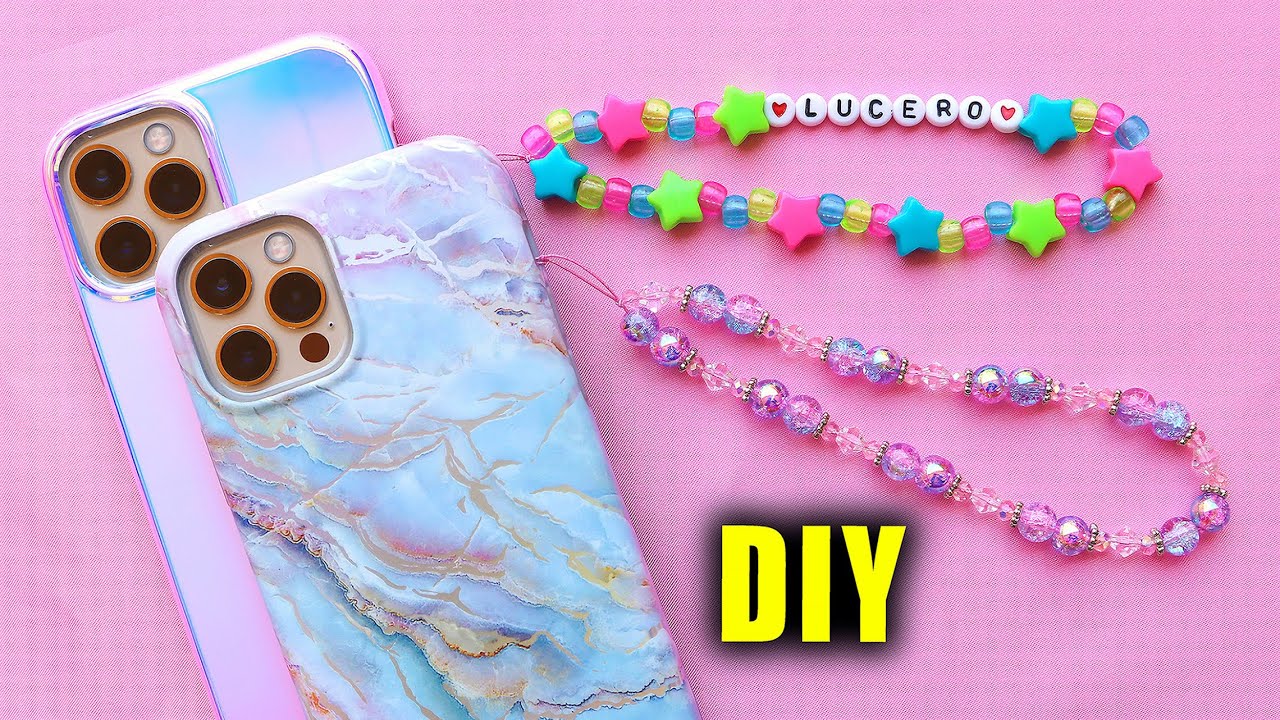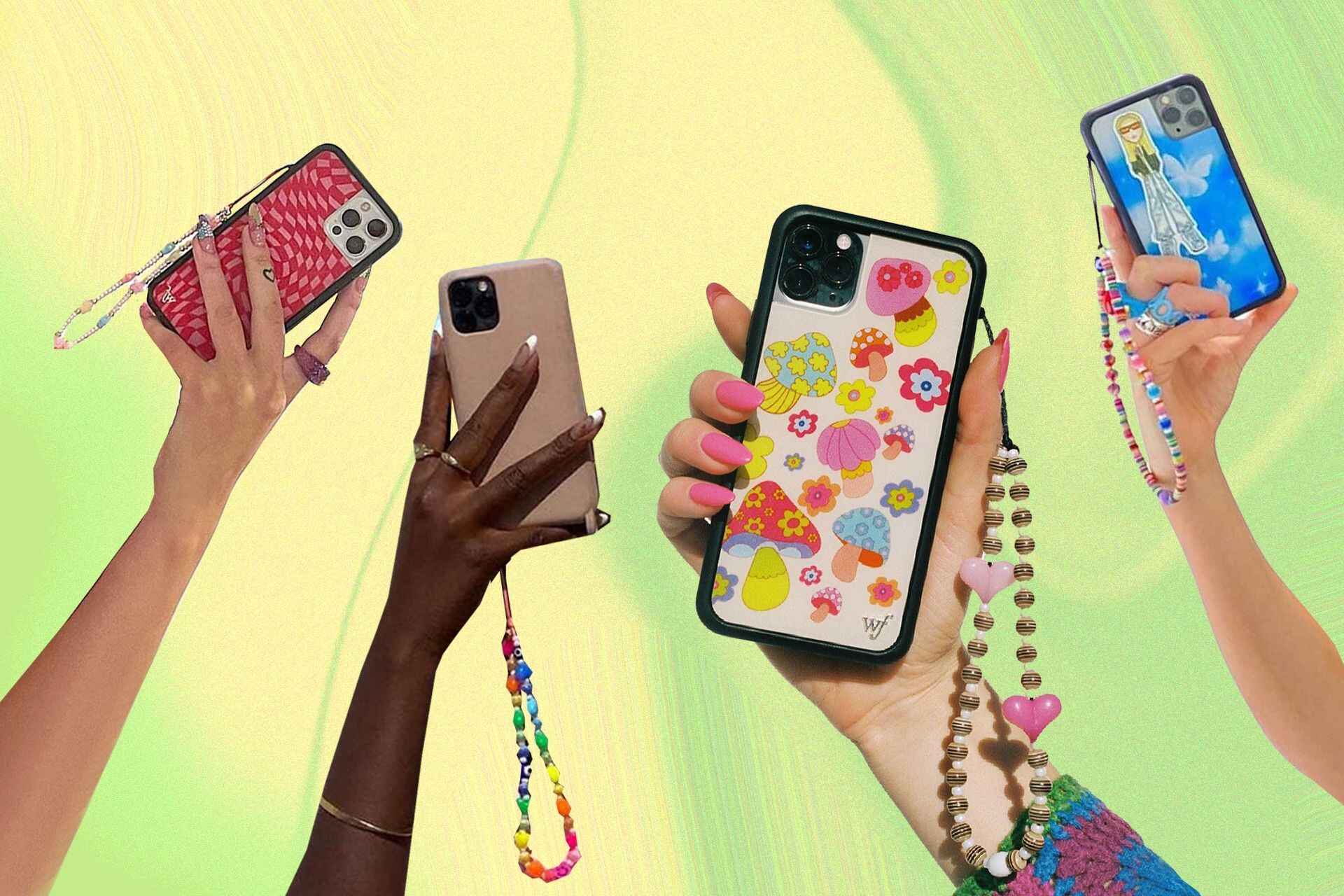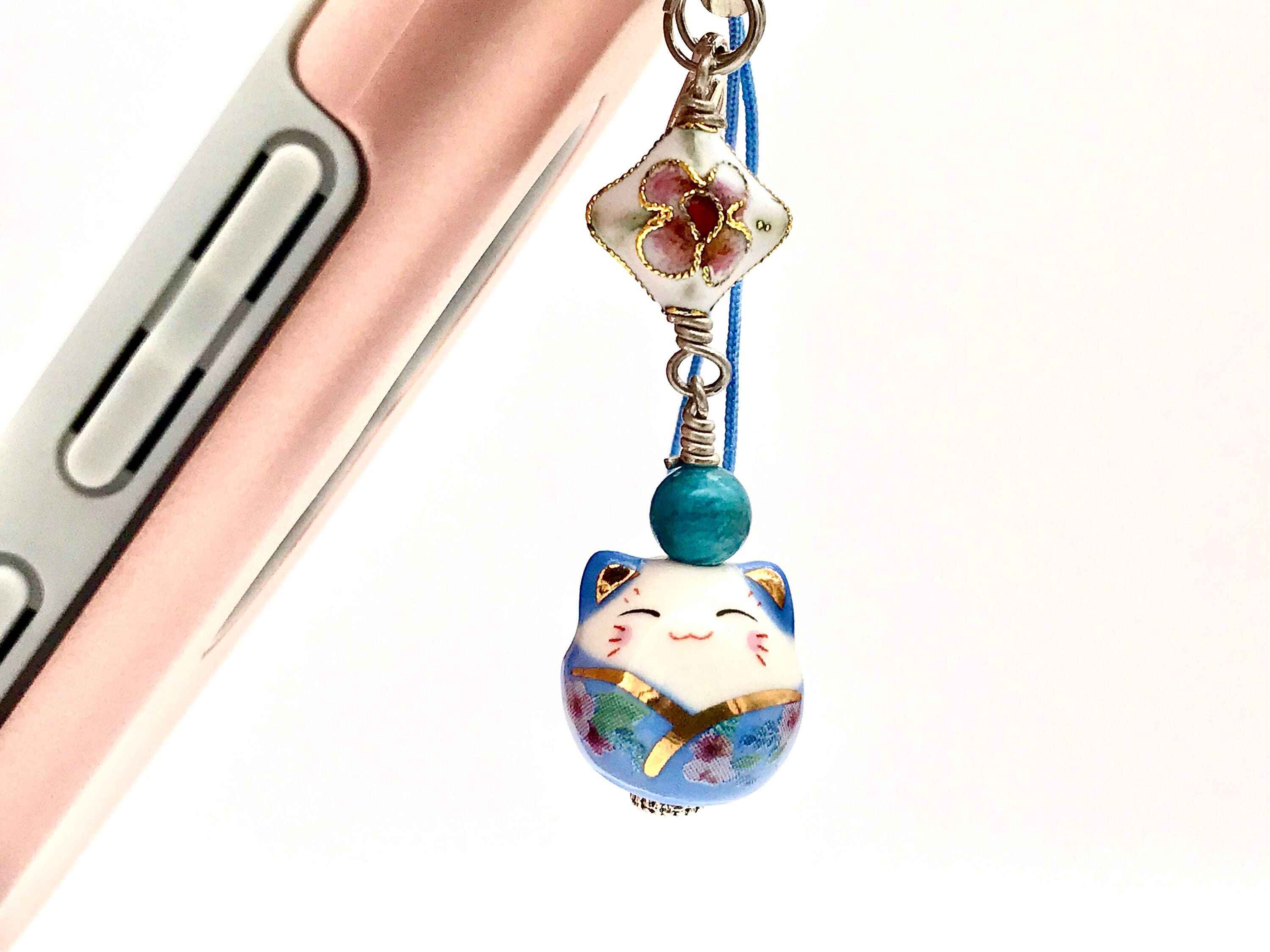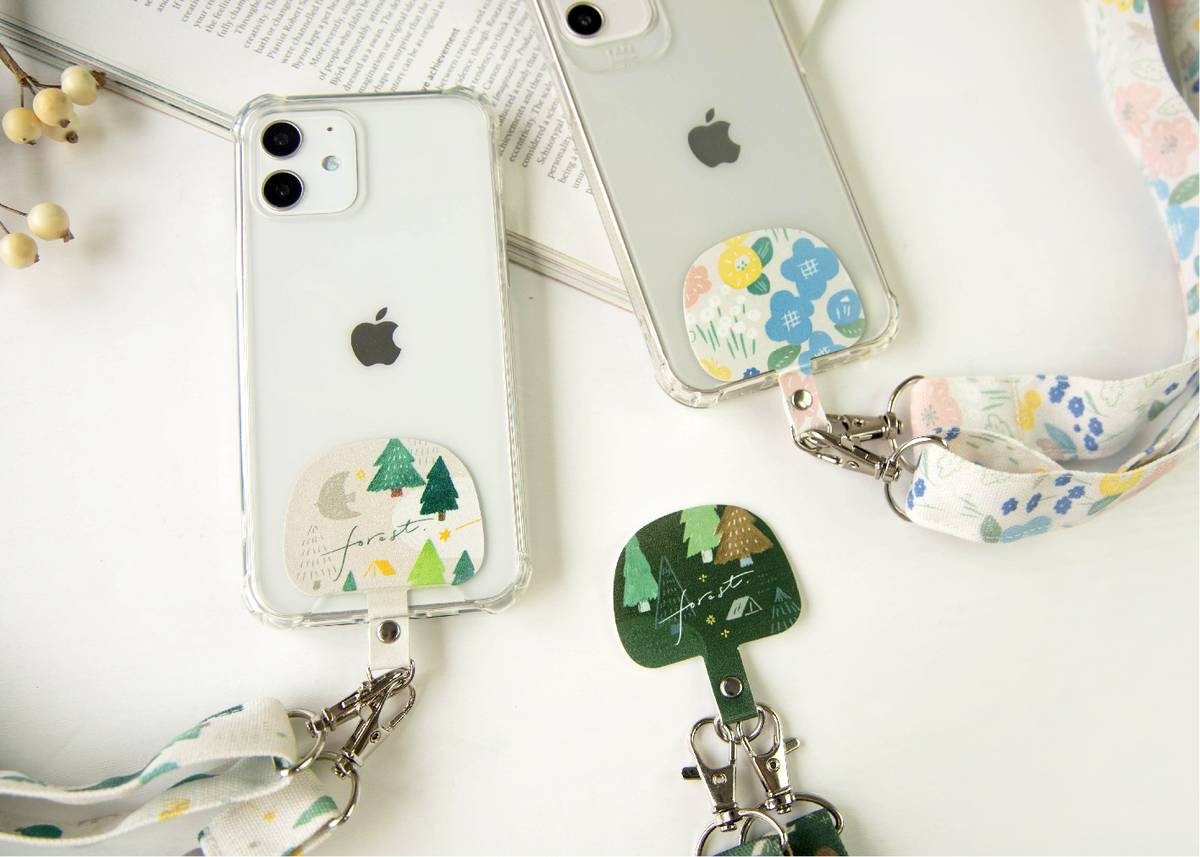Introduction
Japanese cell phone charms are more than just decorative accessories; they represent a unique cultural phenomenon deeply rooted in Japan's rich history and traditions. These miniature ornaments, often adorned with colorful trinkets and symbols, hold a special place in the hearts of the Japanese people, reflecting their values, beliefs, and aesthetic sensibilities.
The world of Japanese cell phone charms is a captivating blend of tradition and modernity, where ancient superstitions intertwine with contemporary fashion trends. These charms, known as "keitai straps" in Japanese, have become ubiquitous in Japanese society, adorning the mobile phones of people from all walks of life. From schoolchildren to business professionals, the allure of these charms transcends age and social status, making them an integral part of everyday life in Japan.
In this article, we will delve into the fascinating history of Japanese cell phone charms, exploring their evolution from simple trinkets to cultural icons. We will also uncover the profound cultural significance of these charms in Japan, shedding light on the symbolic meanings and rituals associated with them. Furthermore, we will examine the popular types of Japanese cell phone charms, revealing the diverse designs and motifs that captivate the Japanese populace. Additionally, we will explore how these charms have influenced Japanese fashion and trends, shaping the aesthetic landscape of the nation.
Join us on a journey through the enchanting world of Japanese cell phone charms, where tradition meets technology, and where the ordinary becomes extraordinary. Let's unravel the secrets and stories behind these tiny treasures, gaining a deeper understanding of their role in Japanese culture and society.
History of Japanese Cell Phone Charms
The history of Japanese cell phone charms dates back to the late 1990s when mobile phones began to gain widespread popularity in Japan. During this time, mobile phone manufacturers introduced the concept of personalizing devices to appeal to a broader consumer base. As a result, the market saw the emergence of small decorative ornaments that could be attached to mobile phones, transforming them into personalized accessories.
The initial cell phone charms were simple and functional, often comprising small trinkets such as miniature figurines, bells, or lucky charms. These early designs were primarily intended to add a touch of individuality to mobile phones, allowing users to distinguish their devices from others. However, as the demand for these charms grew, manufacturers started incorporating cultural and symbolic elements into their designs, catering to the Japanese penchant for traditional motifs and superstitions.
The turning point for Japanese cell phone charms came with the introduction of the "strapya" in the early 2000s. The strapya, a term derived from "strap" and "ya," meaning shop in Japanese, referred to specialty stores that offered an extensive array of cell phone charms. These dedicated shops became hubs for enthusiasts seeking unique and eye-catching charms, fueling a burgeoning subculture centered around these miniature adornments.
During this period, the market witnessed a proliferation of diverse designs, ranging from cute animal-shaped charms to intricately crafted symbols inspired by Japanese folklore and spirituality. As the charm industry continued to thrive, it became intertwined with the broader landscape of Japanese popular culture, gaining visibility in mainstream media and entertainment.
The evolution of Japanese cell phone charms reflects the dynamic interplay between technological innovation and traditional craftsmanship. What began as a simple means of personalizing mobile phones has evolved into a cultural phenomenon deeply ingrained in the fabric of Japanese society. Today, the history of Japanese cell phone charms serves as a testament to the enduring allure of these tiny treasures and their enduring impact on Japanese culture and lifestyle.
Cultural Significance of Cell Phone Charms in Japan
The cultural significance of cell phone charms in Japan transcends their decorative appeal, encompassing a rich tapestry of traditions, beliefs, and societal customs. These miniature adornments hold profound symbolic meanings deeply rooted in Japanese culture, shaping the way people interact with their mobile devices and express their personal identities.
At the heart of the cultural significance of cell phone charms lies the concept of "omamori," a traditional Japanese amulet believed to provide protection and good fortune to its bearer. Drawing from this ancient tradition, many cell phone charms in Japan are imbued with symbolic elements, such as miniature shrines, lucky symbols, and spiritual motifs, serving as modern-day omamori for the digital age. By attaching these charms to their mobile phones, individuals seek to invoke blessings and ward off misfortune, reflecting a deep-seated reverence for spiritual beliefs and superstitions.
Furthermore, cell phone charms serve as potent symbols of self-expression and personal identity in Japanese society. The diverse range of charm designs allows individuals to convey their interests, affiliations, and aesthetic preferences, effectively communicating aspects of their personality to others. For instance, a person may choose a charm adorned with their favorite anime character, a representation of their zodiac sign, or a symbol associated with a specific cultural sub-group. In this way, cell phone charms become powerful tools for self-representation and social signaling, fostering a sense of belonging and connection within diverse communities.
Moreover, the act of exchanging and gifting cell phone charms holds deep cultural significance in Japan, embodying the spirit of reciprocity and social bonding. It is common for friends, family members, and romantic partners to exchange charms as tokens of affection and goodwill. This practice not only strengthens interpersonal relationships but also reinforces the notion of shared experiences and emotional connections. Additionally, the act of giving a charm as a gesture of protection and well-being reflects the Japanese value of empathy and consideration for others' welfare.
In essence, the cultural significance of cell phone charms in Japan extends far beyond their visual appeal, intertwining with the intricate fabric of Japanese customs, spirituality, and social dynamics. These charms serve as tangible expressions of personal beliefs, cultural affiliations, and emotional connections, embodying the essence of Japanese cultural identity in the digital age.
Popular Types of Japanese Cell Phone Charms
Japanese cell phone charms encompass a diverse array of designs, each reflecting unique cultural motifs and aesthetic sensibilities. These miniature adornments, known as "keitai straps" in Japanese, have captured the imagination of the Japanese populace, offering a glimpse into the nation's rich tapestry of traditions and popular culture.
-
Traditional Symbols: Many Japanese cell phone charms feature traditional symbols deeply rooted in Japanese folklore and spirituality. These symbols may include miniature replicas of iconic landmarks such as Torii gates, pagodas, or lucky talismans adorned with kanji characters representing blessings and prosperity. These charms evoke a sense of cultural pride and reverence for Japan's rich heritage.
-
Anime and Manga Characters: A prominent category of cell phone charms in Japan revolves around beloved anime and manga characters. From iconic figures like Pikachu from Pokémon to the protagonists of popular series such as Sailor Moon and Dragon Ball, these charms cater to the fervent fandom surrounding Japanese animation and comics. The vibrant and whimsical designs of these charms appeal to enthusiasts of all ages, serving as delightful expressions of pop culture enthusiasm.
-
Cute and Kawaii Designs: The concept of "kawaii," meaning "cute" or "adorable" in Japanese, is a pervasive aesthetic in Japanese popular culture. Cell phone charms often feature kawaii designs, such as miniature animals, smiling fruits, and endearing anthropomorphic creatures. These charming and lighthearted designs resonate with individuals seeking to infuse their daily lives with a sense of playfulness and innocence.
-
Zodiac and Astrological Charms: Another popular category of Japanese cell phone charms revolves around zodiac signs and astrological motifs. These charms often depict the twelve animals of the Chinese zodiac or incorporate celestial symbols associated with astrology. For many, these charms serve as personal talismans, aligning with their astrological identity and offering a sense of cosmic connection.
-
Food and Beverage Themes: Japanese cuisine holds a revered status globally, and this reverence extends to cell phone charms. Charms shaped like sushi, bento boxes, ramen bowls, and other delectable treats celebrate the culinary heritage of Japan, appealing to individuals with a passion for gastronomy and culinary delights.
-
Lucky Charms and Superstitions: Many Japanese cell phone charms are imbued with symbols of luck and protection, drawing from traditional superstitions and folk beliefs. These charms may feature auspicious motifs such as Maneki-neko (the beckoning cat), Daruma dolls, or lucky charms adorned with vibrant colors and intricate patterns, serving as tangible tokens of good fortune and positivity.
The diverse range of Japanese cell phone charms reflects the multifaceted nature of Japanese culture, encompassing elements of tradition, modernity, and creative expression. These charms not only serve as decorative embellishments but also as poignant reflections of personal interests, cultural affiliations, and spiritual beliefs, embodying the essence of Japanese identity in the digital age.
Influence of Cell Phone Charms on Japanese Fashion and Trends
The influence of cell phone charms on Japanese fashion and trends extends beyond mere accessorizing; it has permeated the cultural landscape, leaving an indelible mark on the nation's sartorial expressions and aesthetic sensibilities. These miniature adornments, once confined to mobile devices, have transcended their utilitarian role to become powerful symbols of personal style and fashion consciousness.
In the realm of Japanese fashion, cell phone charms have emerged as coveted accessories, adorning not only mobile phones but also handbags, backpacks, and keychains. Their vibrant colors, whimsical designs, and cultural motifs have seamlessly integrated into the visual tapestry of Japanese street fashion, adding a touch of individuality and playfulness to everyday ensembles. Young trendsetters and fashion enthusiasts have embraced cell phone charms as essential embellishments, incorporating them into their outfits to make bold statements and showcase their unique personalities.
Moreover, the influence of cell phone charms on Japanese fashion trends is evident in the proliferation of themed charm collections tied to seasonal and cultural celebrations. During festivals and special occasions, a myriad of themed charms floods the market, reflecting the festive spirit and cultural symbolism associated with these events. From cherry blossom-themed charms during Hanami (cherry blossom viewing) season to charms adorned with traditional motifs for New Year celebrations, these accessories serve as tangible expressions of cultural pride and festive fervor, shaping the fashion landscape during specific times of the year.
The impact of cell phone charms on Japanese fashion is also intertwined with the concept of "kawaii," or cuteness, which permeates the nation's aesthetic preferences. The proliferation of charming and adorable designs in cell phone charms has contributed to the perpetuation of the kawaii culture, influencing fashion choices and design aesthetics across various consumer products. This pervasive cuteness has transcended age boundaries, captivating individuals of all generations and inspiring a fashion movement characterized by playful and endearing elements.
Furthermore, the influence of cell phone charms on Japanese fashion and trends extends to the realm of accessory design and innovation. Designers and artisans draw inspiration from the captivating world of cell phone charms, infusing their creations with similar motifs and themes. This cross-pollination of design elements has led to the emergence of jewelry, handbags, and apparel featuring charm-inspired embellishments, creating a seamless synergy between traditional accessories and contemporary fashion.
In essence, the influence of cell phone charms on Japanese fashion and trends is a testament to the enduring impact of these miniature adornments on the nation's sartorial landscape. From street fashion to seasonal celebrations, these charms have left an indelible imprint, infusing Japanese fashion with a delightful blend of cultural symbolism, individual expression, and playful aesthetics.
Conclusion
In conclusion, Japanese cell phone charms encapsulate a captivating fusion of tradition, cultural symbolism, and contemporary expression, weaving a vibrant tapestry of personal identity and societal connections. From their humble origins as simple accessories to their status as cultural icons, these miniature adornments have evolved into powerful emblems of Japanese heritage and fashion consciousness. The rich history of cell phone charms reflects the intricate interplay between technological innovation and traditional craftsmanship, highlighting Japan's ability to seamlessly blend the old with the new.
The profound cultural significance of cell phone charms in Japan transcends their decorative appeal, embodying the essence of omamori and serving as tangible expressions of personal beliefs and social connections. These charms not only adorn mobile devices but also symbolize the values of empathy, reciprocity, and cultural pride, fostering a sense of community and shared experiences.
As we explored the popular types of Japanese cell phone charms, we encountered a diverse array of designs, each reflecting unique facets of Japanese culture, from traditional symbols and anime characters to zodiac motifs and culinary delights. These charms serve as vivid reflections of personal interests, cultural affiliations, and spiritual beliefs, providing individuals with a means of self-expression and connection to their cultural heritage.
Furthermore, the influence of cell phone charms on Japanese fashion and trends has been profound, permeating the visual landscape of street fashion, seasonal celebrations, and accessory design. These charms have not only adorned mobile devices but have also become essential embellishments in personal style, contributing to the perpetuation of the kawaii culture and inspiring a fashion movement characterized by playfulness and endearing elements.
In essence, Japanese cell phone charms stand as enduring testaments to the nation's creativity, cultural pride, and penchant for self-expression. As they continue to captivate the hearts of the Japanese populace and enthusiasts worldwide, these miniature adornments serve as poignant reminders of the enduring allure of tradition in the digital age and the profound impact of cultural artifacts on everyday life.







